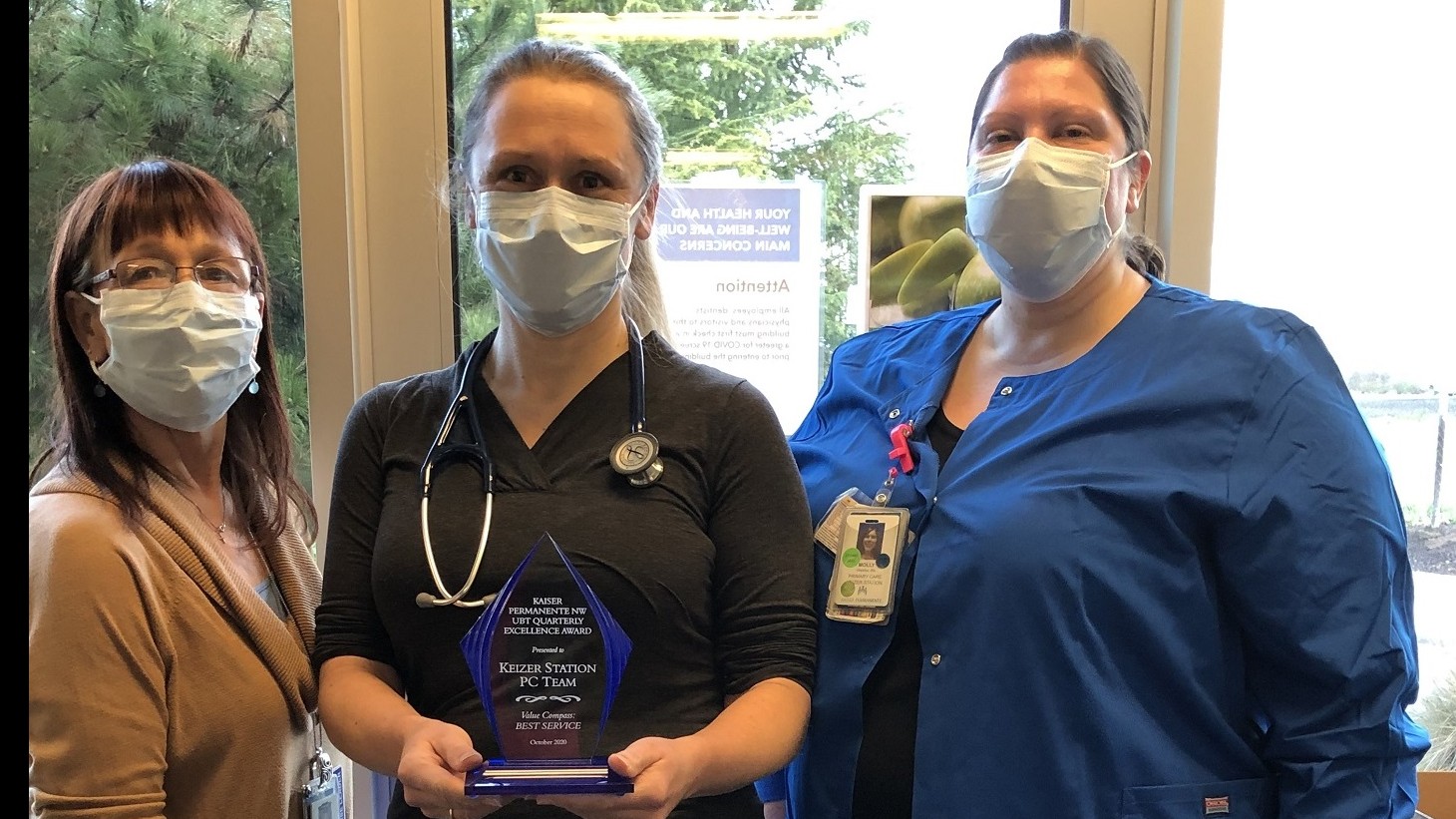Hank q1q2-2021
See the whole issueAll In for Virtual Visits

Partnership power: The Keizer Station Family Medicine team has been honored by the Northwest Region for improving service and access. Pictured (from left) are team co-leads Medical Office Director Ruthie Berrell; Caroline King-Widdall, MD; and nurse Molly Maddox, an OFNHP member.
Working together helps team get ahead of curve
After learning more than a year ago that patients were having trouble getting doctors’ appointments, members of the Keizer Station Family Medicine team in Oregon began exploring ways to improve service and access. Their solution? Offer more video visits.
“What we didn’t realize at the time is that this work would put us in a unique position to be ready for the pandemic, which wasn’t on anyone’s radar in fall 2019,” says Ruthie Berrell, medical office director and management co-lead for the Family Medicine/Nurse Treatment Center unit-based team.
Collaboration by the team’s frontline workers, managers and physicians has served as a partnership model for UBTs in the Northwest Region. It’s also earned the department applause for improving service and access at a critical time in health care, as teams across the enterprise adapt to the rise of virtual care.
“It wasn’t always easy,” says Molly Maddox, RN, the team’s labor co-lead and OFNHP member. “This took a lot of working out the kinks and working together.”
Overcoming resistance to change
One of the team’s earliest challenges involved staff resistance to virtual care. Worried that patients would perceive virtual visits as a “takeaway,” some staff members pushed back.
“The culture of how we delivered care was in the medical office, and people had different levels of acceptance across the spectrum,” says Caroline King-Widdall, MD, team co-lead and physician in charge.
So, team members educated their peers on the benefits of virtual care and developed scripting to help them feel at ease offering video appointments to patients.
“People are more comfortable now taking the lead and scheduling appointments,” Berrell says. Others feared that older patients were less tech savvy and would have difficulty accessing their virtual visits. In response, team members posted informational fliers in exam rooms and emailed instructions to patients before their appointments.
Building team engagement
Key to the team’s success was engaging everyone, including physicians. Medical assistants and nurses partnered with providers to review physician schedules and flag appointments they could convert to virtual visits.
Also, UBT members participated in weekly huddles “where we brainstormed new tests of change and talked about what worked and what didn’t work,” says Maddox. The team’s efforts paid off.
Patient satisfaction scores for ease of scheduling appointments jumped from 53% to 85% between August 2019 and December 2020. And because members access video visits through kp.org, website registration among the department’s patients increased by nearly 10% during the past year.
The hard work has not gone unnoticed. This past fall, the team received the region’s UBT Excellence Recognition Award for improving service and access.
Maddox attributes the team’s success to strong relationships rooted in partnership. “We know that we would not have had this success if our team didn’t work together.”
